Overview
The article delineates nine pivotal benefits of IT outsourcing specifically for SaaS product owners, underscoring its critical role in enhancing operational efficiency, curtailing costs, and tapping into global expertise. These advantages are substantiated by compelling statistics and pertinent examples that illustrate how outsourcing empowers companies to concentrate on core objectives, foster innovation more effectively, and adeptly navigate compliance challenges. Ultimately, this strategic approach not only drives growth but also elevates product quality, reinforcing the necessity for SaaS owners to consider outsourcing as a vital component of their business strategy.
Introduction
Navigating the competitive landscape of software-as-a-service (SaaS) can be daunting, particularly as the market evolves at an unprecedented pace. For SaaS product owners, the strategic decision to outsource IT functions stands out as a powerful solution, unlocking a myriad of benefits that can drive growth and innovation. But how can outsourcing not only reduce costs but also enhance product quality and operational efficiency? This article delves into nine key advantages of IT outsourcing, illuminating how it can transform the development process and empower SaaS companies to thrive in an increasingly complex environment.
SDA: Streamline Development with Custom Software Solutions
SDA stands out as a leader in delivering tailored software solutions that significantly elevate the development process for SaaS service owners. By leveraging customized applications, organizations can enhance user experiences and drive growth. These tailored solutions are meticulously crafted to align with specific organizational objectives, leading to more efficient project execution and superior product quality.
For instance, businesses utilizing custom software have reported remarkable improvements in customer relationships and operational efficiency, with many witnessing positive ROI from their software investments. The global custom software development market is projected to soar to USD 146.18 billion by 2030, highlighting the increasing recognition of the value of custom software solutions in the industry.
Furthermore, the worldwide software-as-a-service market is anticipated to surge from $148.75 billion in 2021 to approximately $702.19 billion by 2030, underscoring the competitive landscape and the critical role of tailored software in fostering growth.
To fully capitalize on these advantages, software solution owners must evaluate their specific operational requirements before selecting custom software options.
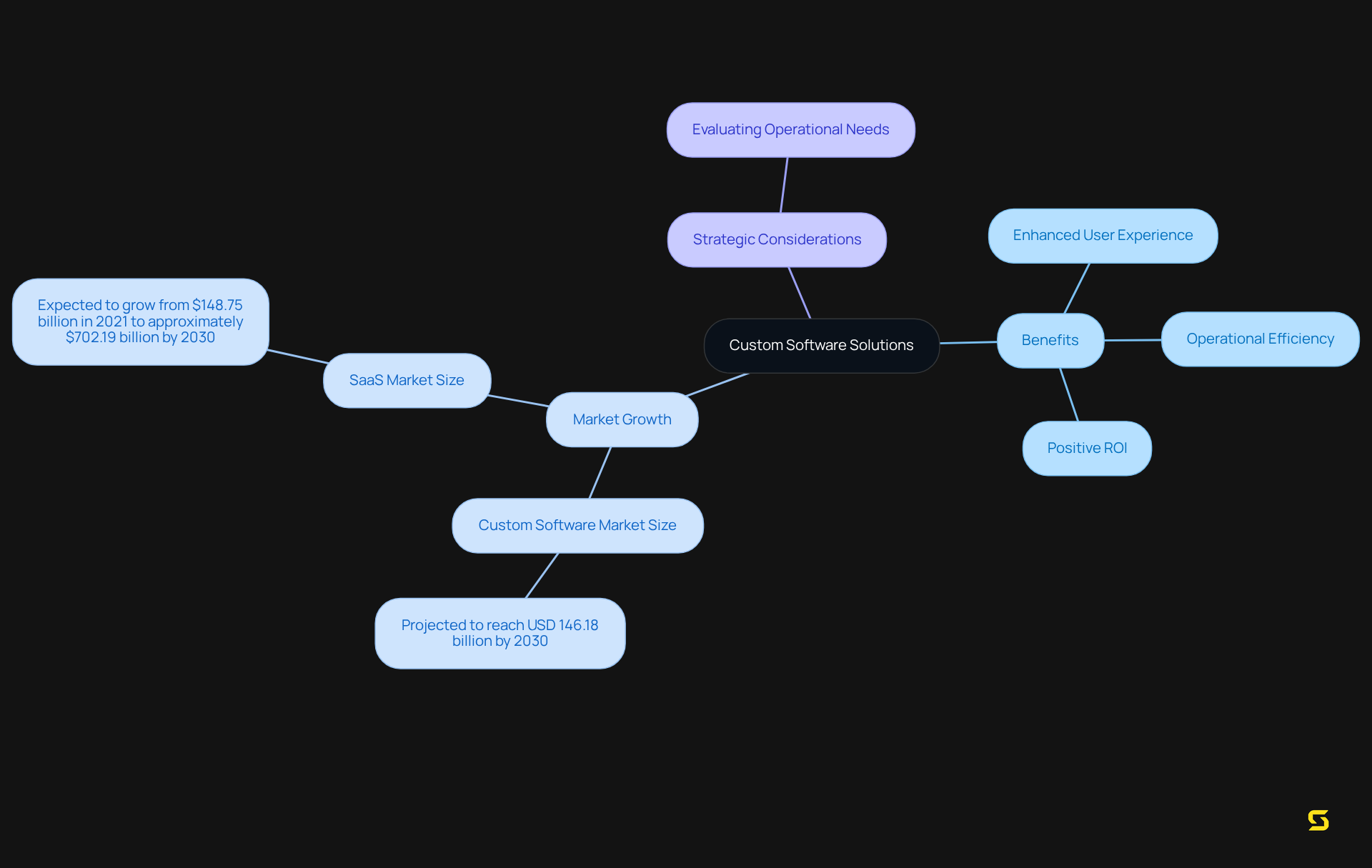
Global Talent Access: Enhance Your Team's Skill Set
Outsourcing IT services empowers SaaS application owners to access a vast global talent pool, significantly enhancing their team's skill set. This access to specialized expertise not only fosters innovative solutions but also contributes to the development of enhanced features. By collaborating with skilled professionals worldwide, organizations can ensure their software products are developed using the latest technologies and industry best practices.
Notably, 90% of small enterprises are now planning to outsource functions, reflecting a growing recognition of the advantages derived from leveraging external expertise. Furthermore, 34% of companies cite cost as the primary factor for contracting services, underscoring the financial motivations behind these decisions. Additionally, 76% of surveyed companies were already engaging in IT outsourcing for their IT functions in 2022, highlighting the widespread adoption of this strategy in the industry.
This strategic approach not only optimizes resource allocation but also accelerates innovation, enabling SaaS companies to maintain competitiveness in a rapidly evolving market. As Anna Taylor observed, businesses of all sizes focus on two core objectives: reducing costs and enhancing efficiency.
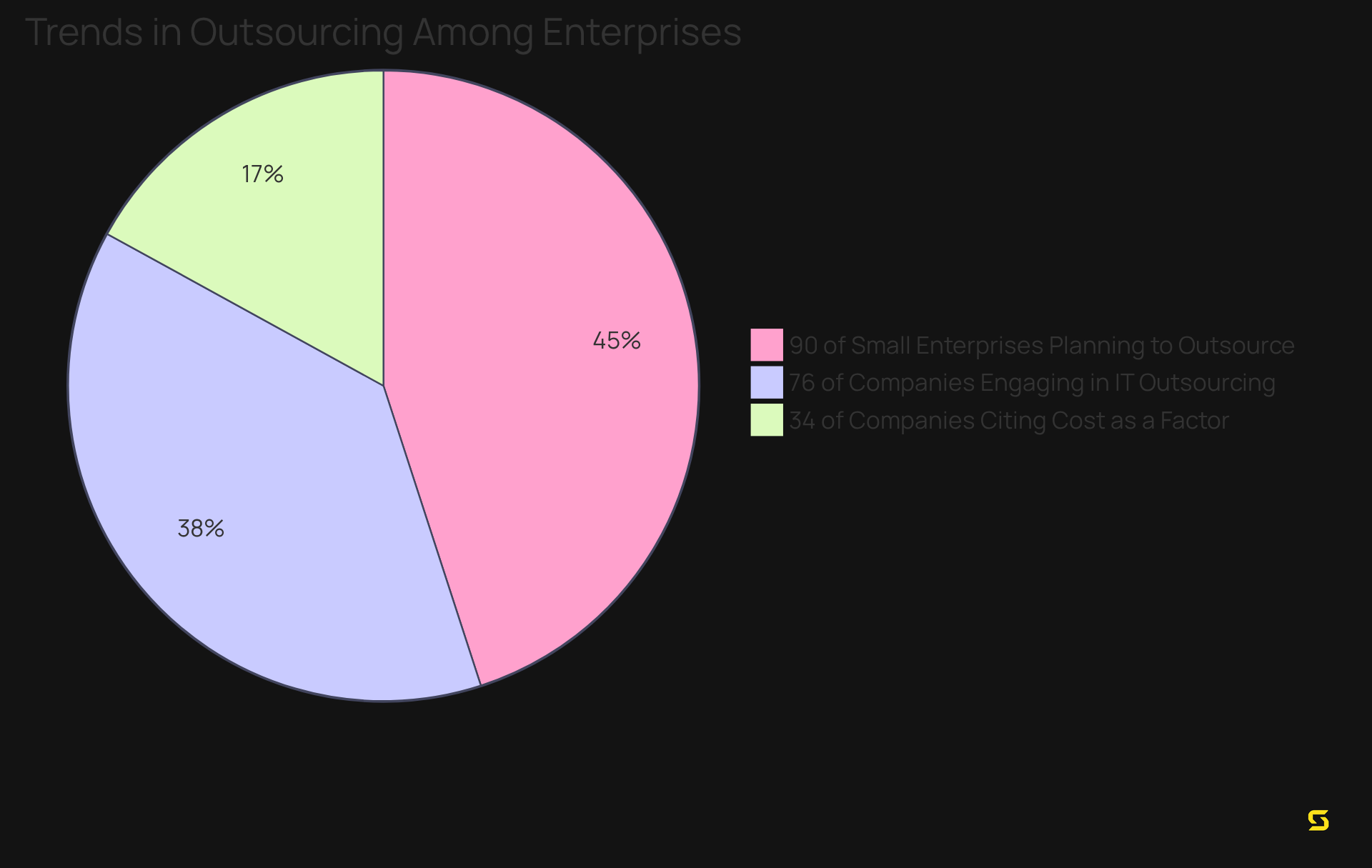
Cost Control: Reduce Operational Expenses Effectively
One of the most significant advantages of it outsourcing lies in its ability to effectively manage and reduce operational expenses. By delegating development tasks, software product owners can markedly decrease costs associated with hiring, training, and maintaining an in-house team. This strategy not only leads to an average operational cost reduction of approximately 15% compared to internal operations, as highlighted by the ISG study, but also provides the financial flexibility necessary for organizations to allocate resources more strategically. Consequently, this enables a sharper focus on core activities that drive growth and innovation.
Numerous software-as-a-service firms exemplify the effective utilization of external resources to optimize processes and enhance profitability. By employing specialized contractors, they gain access to a vast talent pool without incurring the overhead costs of full-time employees. This model facilitates the quick onboarding of skilled professionals, ensuring that projects are completed both efficiently and effectively.
Financial analysts emphasize that it outsourcing can yield substantial savings, with one study indicating that companies actively seeking to lower operational expenses can improve their profit margins by up to 20% through strategic outsourcing decisions. This approach not only alleviates the burden of fixed costs but also enhances overall operational efficiency, enabling companies to thrive in a competitive landscape.
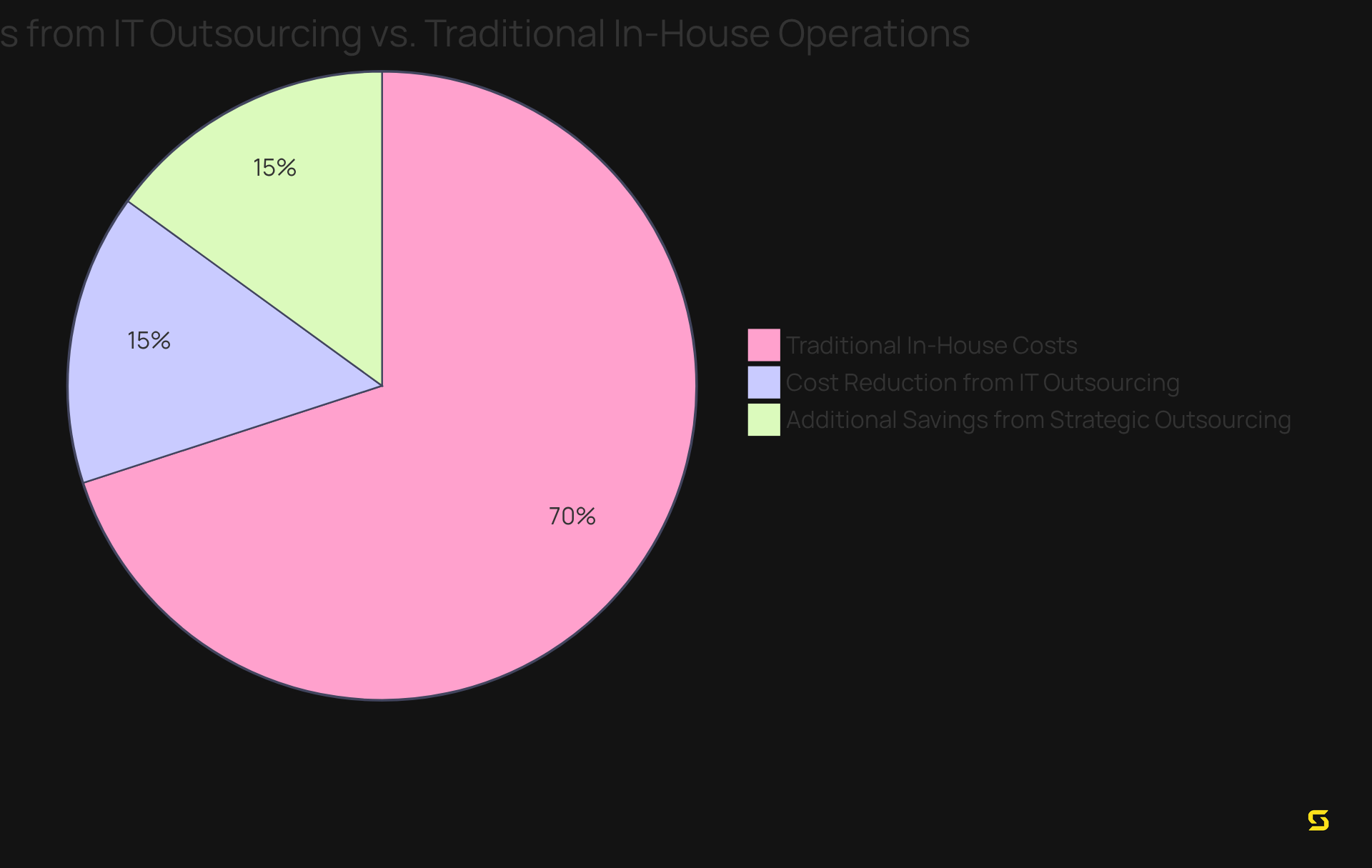
Core Focus: Concentrate on Your Business Objectives
IT outsourcing empowers SaaS product owners to sharpen their focus on primary objectives. By employing IT outsourcing to delegate technical tasks to specialized external teams, companies can redirect their efforts toward strategic planning, market positioning, and customer engagement. This realignment not only fosters greater innovation but also drives improved organizational outcomes. Notably, 65% of organizations report that IT outsourcing enables them to concentrate on core activities, a crucial factor in maintaining a competitive edge.
Additionally, successful software-as-a-service entrepreneurs consistently underline the importance of assigning technical responsibilities through IT outsourcing to leverage external expertise, which allows them to innovate and adapt swiftly to market demands. As Naveen Kumar, a data and statistical expert, articulates, 'IT outsourcing aids organizations in operating more efficiently because it allows them to focus on what they excel at.'
Consequently, many software-as-a-service companies witness substantial enhancements in their strategic planning processes, ultimately leading to accelerated growth and a stronger market presence. Moreover, 59% of companies outsource to lower expenses, further underscoring the financial motivations behind these strategic decisions.
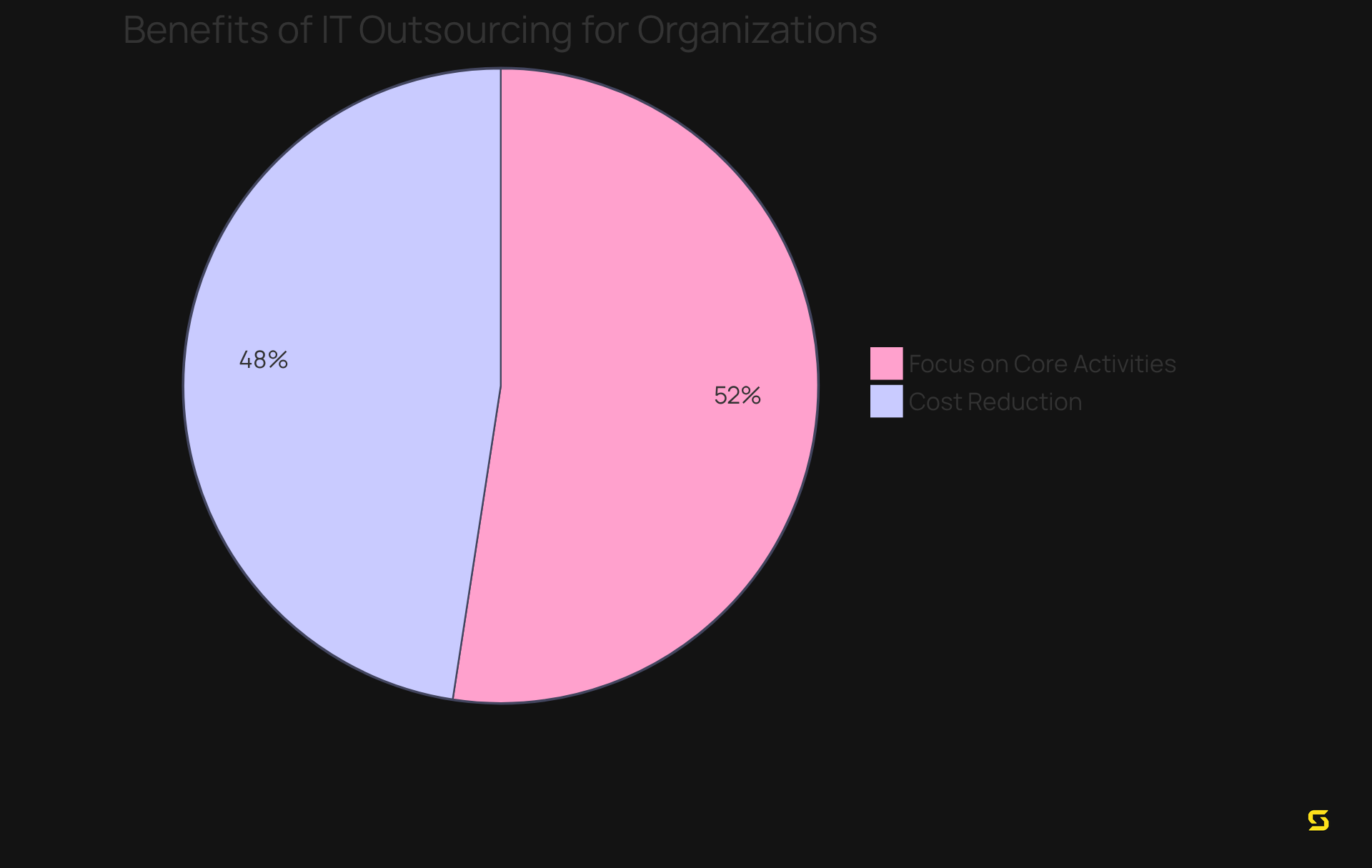
Risk Sharing: Mitigate Uncertainties in Development
IT outsourcing empowers SaaS product owners to effectively share the inherent risks of software development. By collaborating with experienced professionals, organizations can significantly reduce uncertainties related to project timelines, budget overruns, and technical challenges. This collaborative approach not only distributes responsibility but also enhances resilience throughout the development process, resulting in more favorable project outcomes.
For instance, a fintech company successfully implemented a structured communication framework after facing delays due to misunderstandings with an outsourced team, which significantly improved their project delivery.
Furthermore, Deloitte's 2024 Global Outsourcing Survey highlights that 78% of companies encounter at least one major challenge during external service collaborations, underscoring the importance of strategic partnerships in managing these complexities.
As Sunil Bakshi notes, risk transfer or risk sharing occurs when organizations shift the risk to a third party. By leveraging the expertise of external partners through IT outsourcing, software owners can mitigate development risks and enhance the resilience and effectiveness of the software development lifecycle.
Notably, 56% of project failures can be attributed to communication breakdowns, emphasizing the critical necessity for effective communication in external collaboration.
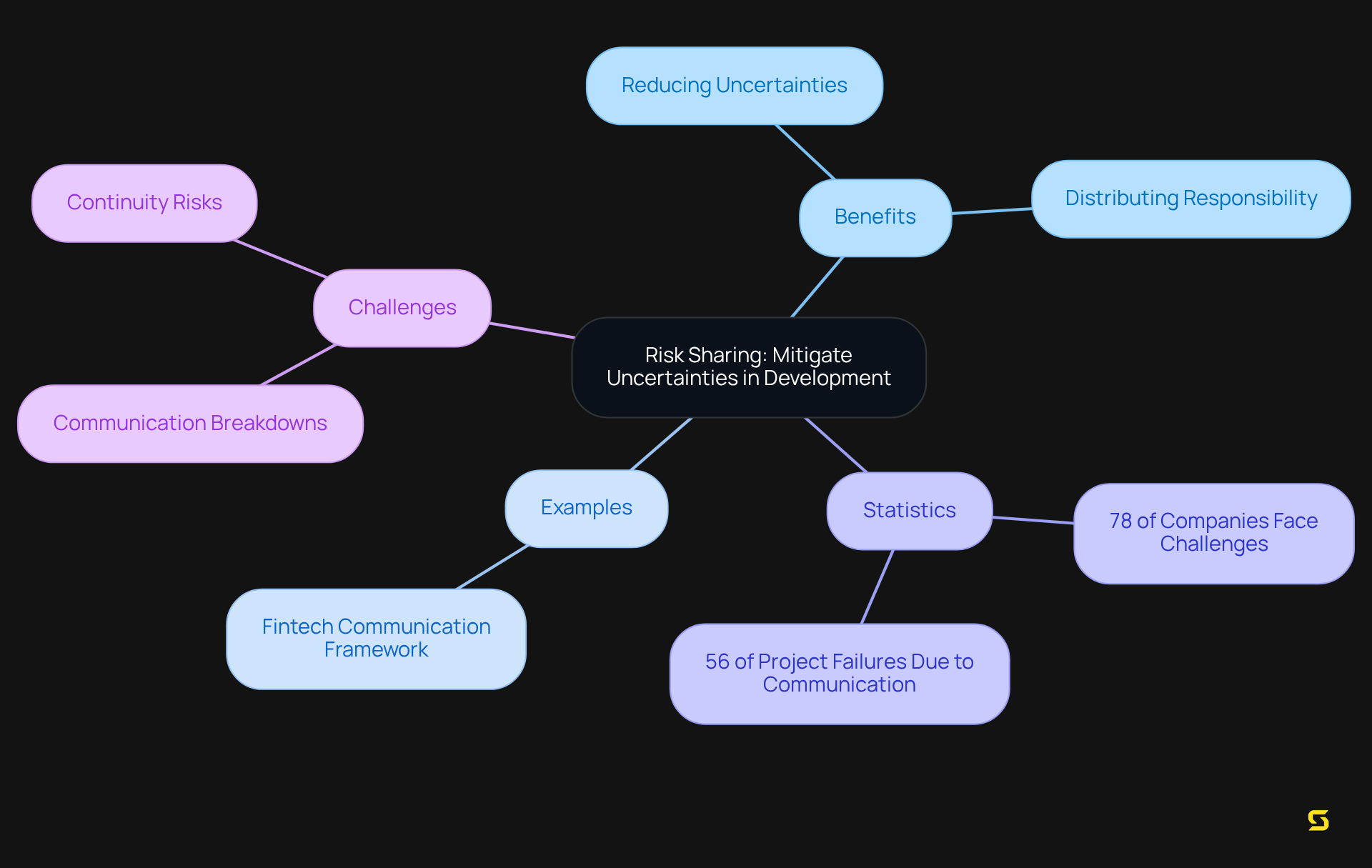
Scalability: Adapt to Changing Business Demands
It outsourcing empowers software owners with the flexibility to adjust their development efforts in response to evolving business needs. In an environment characterized by rapid growth or strategic pivots, outsourced teams can swiftly recalibrate resources and expertise to align with changing requirements. This level of adaptability is not merely beneficial; it is essential for maintaining competitiveness in the fast-paced software-as-a-service landscape. By leveraging it outsourcing capabilities, organizations can ensure they remain agile and responsive, ultimately driving sustained success.
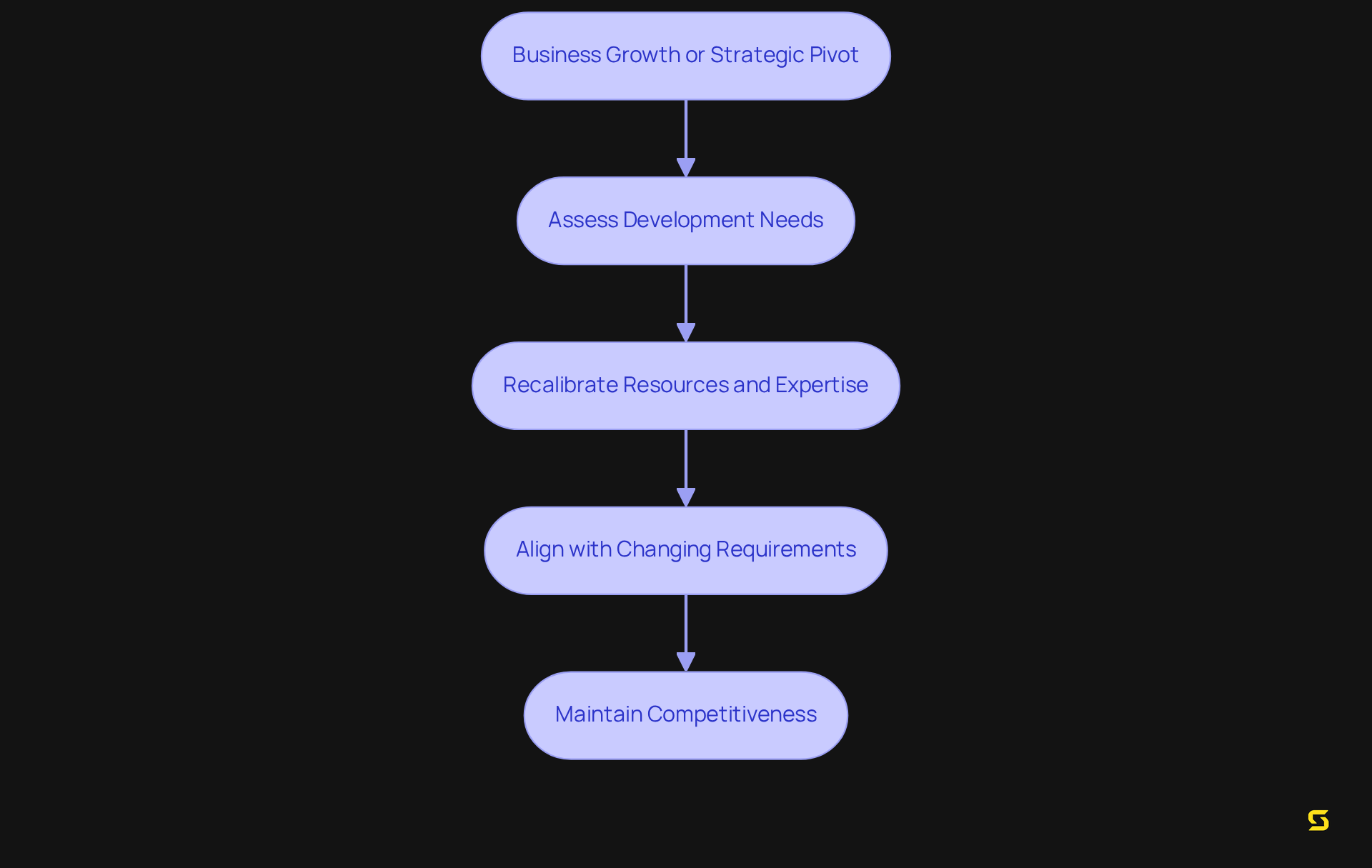
Innovative Solutions: Leverage Cutting-Edge Technologies
IT outsourcing empowers software application owners to harness advanced technologies and innovative solutions. By partnering with specialized teams, businesses can seamlessly integrate the latest advancements into their offerings, significantly enhancing both functionality and user experience. This unwavering commitment to innovation not only elevates the quality of services but also positions companies with a formidable competitive edge in the market. Embrace the potential of IT outsourcing to transform your IT capabilities and drive success.
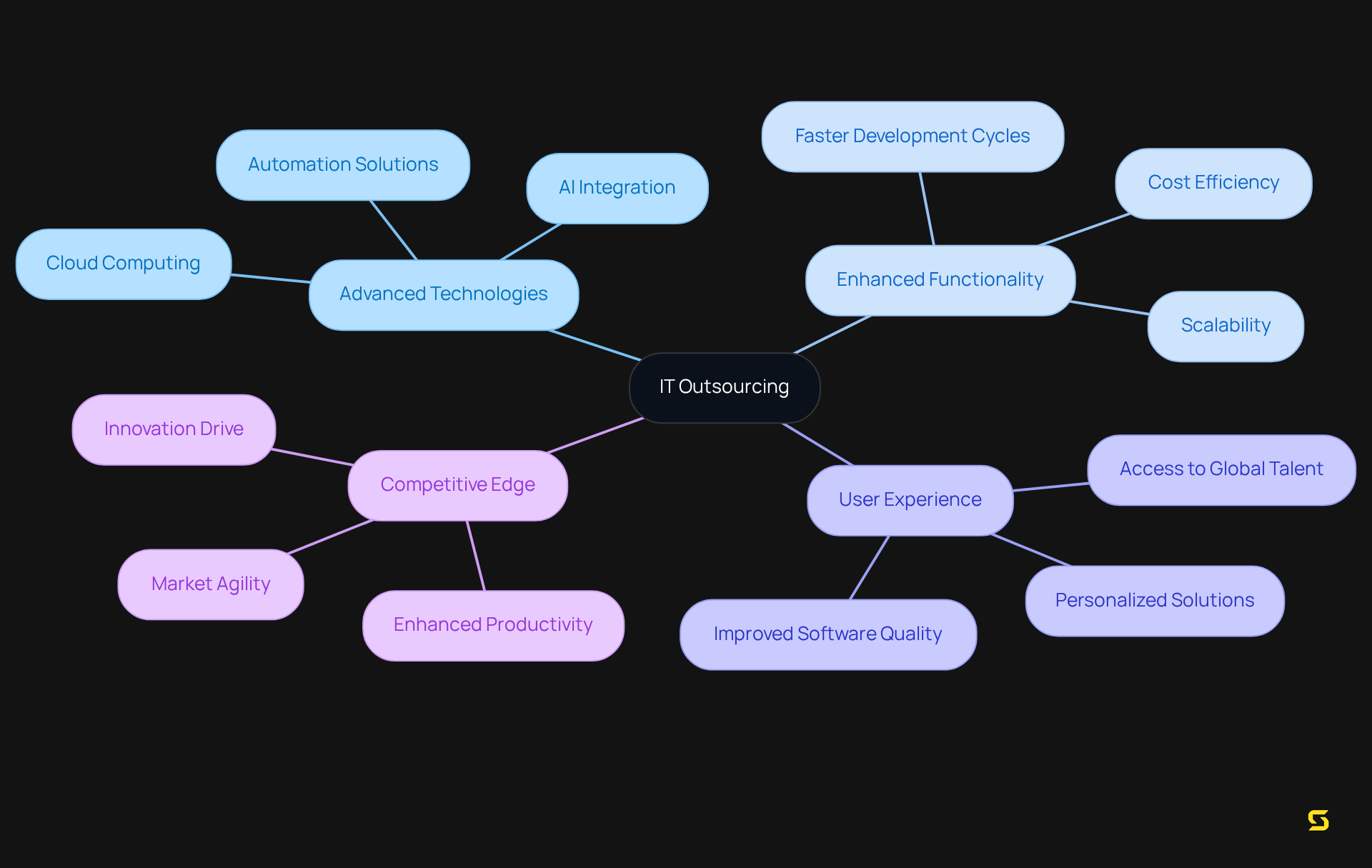
Efficiency Boost: Optimize Your Development Processes
By delegating IT functions, SaaS application owners significantly enhance their development processes, leading to improved efficiency. External teams often introduce established workflows and best practices, streamlining project execution. This optimization not only accelerates development timelines but also elevates the quality of the final product. Notably, IT externalization results in a 25% increase in system uptime. Furthermore, approximately 70% of companies worldwide report savings on operational costs through this method, underscoring the tangible advantages of this strategy. Additionally, 65% of organizations assert that delegating tasks allows them to focus on core functions, freeing internal resources to drive innovation.
As K. Myronenko, Head of Business Unit, observes, 'In 2025, IT outsourcing continues to empower global businesses and small companies to engage third-party specialists, promoting digital transformation, optimizing financial input, and accessing global tech talents.'
By leveraging specialized knowledge, software owners can ensure their projects are completed more effectively, ultimately resulting in quicker time-to-market and a competitive advantage in the rapidly evolving technology landscape.
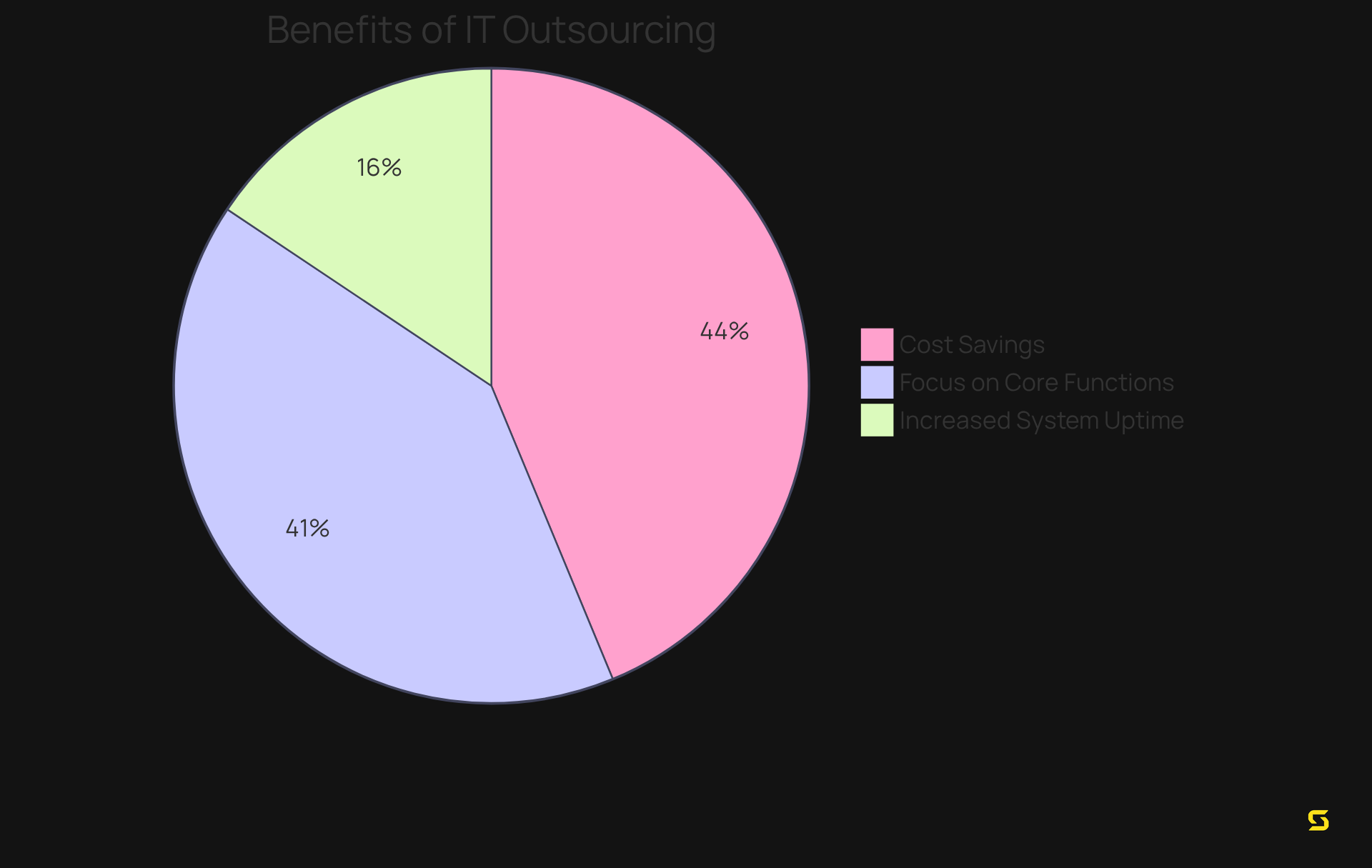
Compliance Support: Navigate Regulatory Challenges
IT outsourcing provides SaaS product owners with crucial compliance support, particularly in navigating the complex landscape of industry regulations. Experienced external partners bring a profound understanding of compliance standards, enabling businesses to effectively tackle intricate regulatory challenges.
For instance, the case study "Scaling for Tomorrow: How External Partnerships Drive Fintech Growth" highlights how fintech firms have successfully leveraged external resources to bolster their compliance capabilities while scaling operations. This collaboration ensures that software products meet necessary legal requirements and significantly mitigates the risk of penalties.
Moreover, by demonstrating a commitment to compliance, companies can build trust with their users, fostering stronger relationships and paving the way for long-term success. A striking statistic reveals that 92% of financial institutions utilizing IT outsourcing for compliance functions report enhancements in effectiveness and efficiency, underscoring the tangible advantages of such partnerships.
Legal experts, including Eli Morillo, emphasize that "delegating tasks can offer compliance relief without disrupting operations as usual," reinforcing the significance of these collaborations. As software-as-a-service firms continue to expand, IT outsourcing the expertise of external service providers becomes increasingly vital for ensuring compliance and achieving operational excellence.
To maximize these benefits, software service owners should evaluate potential outsourcing partners based on their compliance proficiency and track record in managing regulatory challenges.
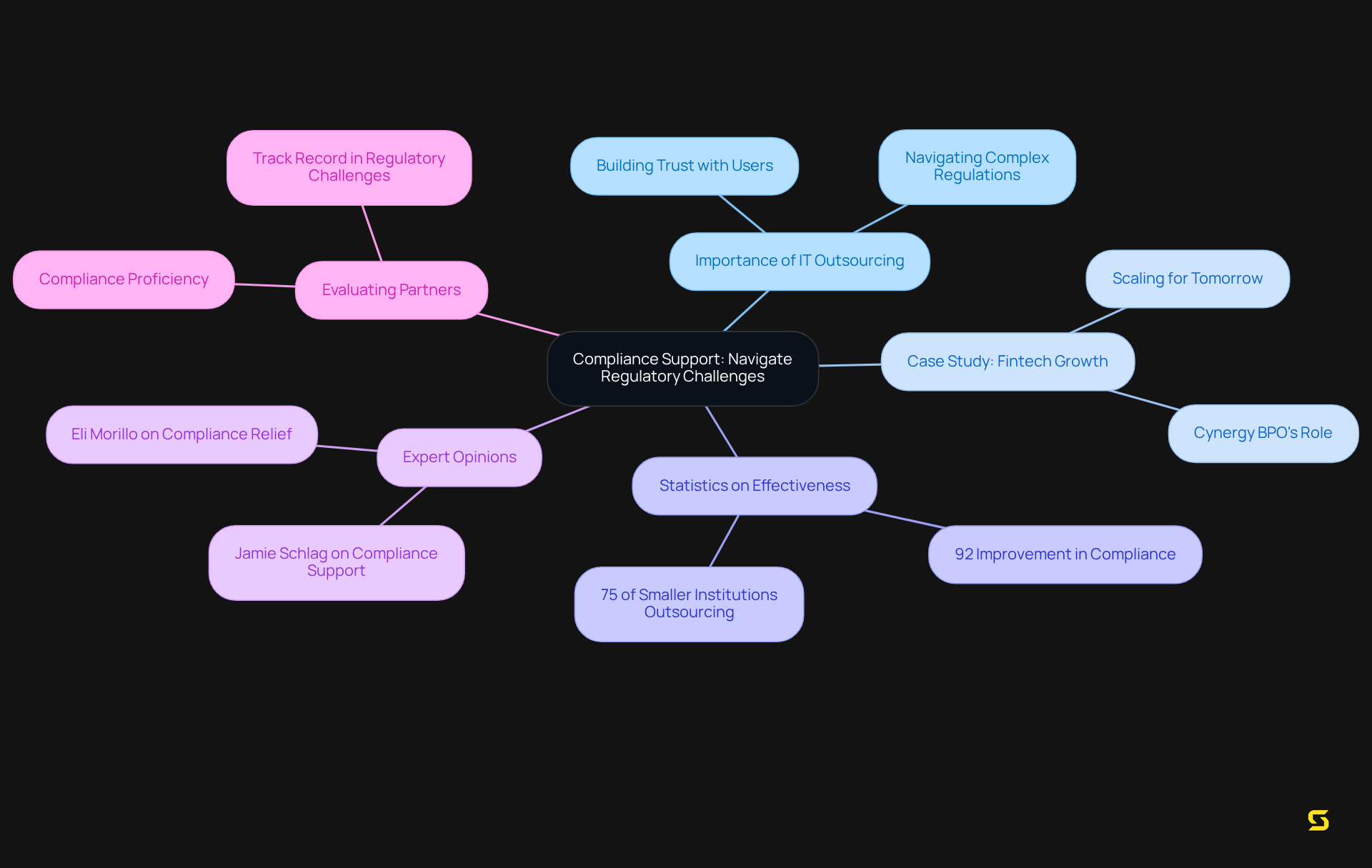
Quality Assurance: Elevate Your Product Standards
It outsourcing is essential for implementing robust quality assurance processes that elevate industry standards. By collaborating with experienced teams, SaaS product owners can guarantee that their software is subjected to comprehensive testing and validation. This unwavering commitment to quality not only significantly enhances user satisfaction but also fortifies the brand's reputation within the competitive market.
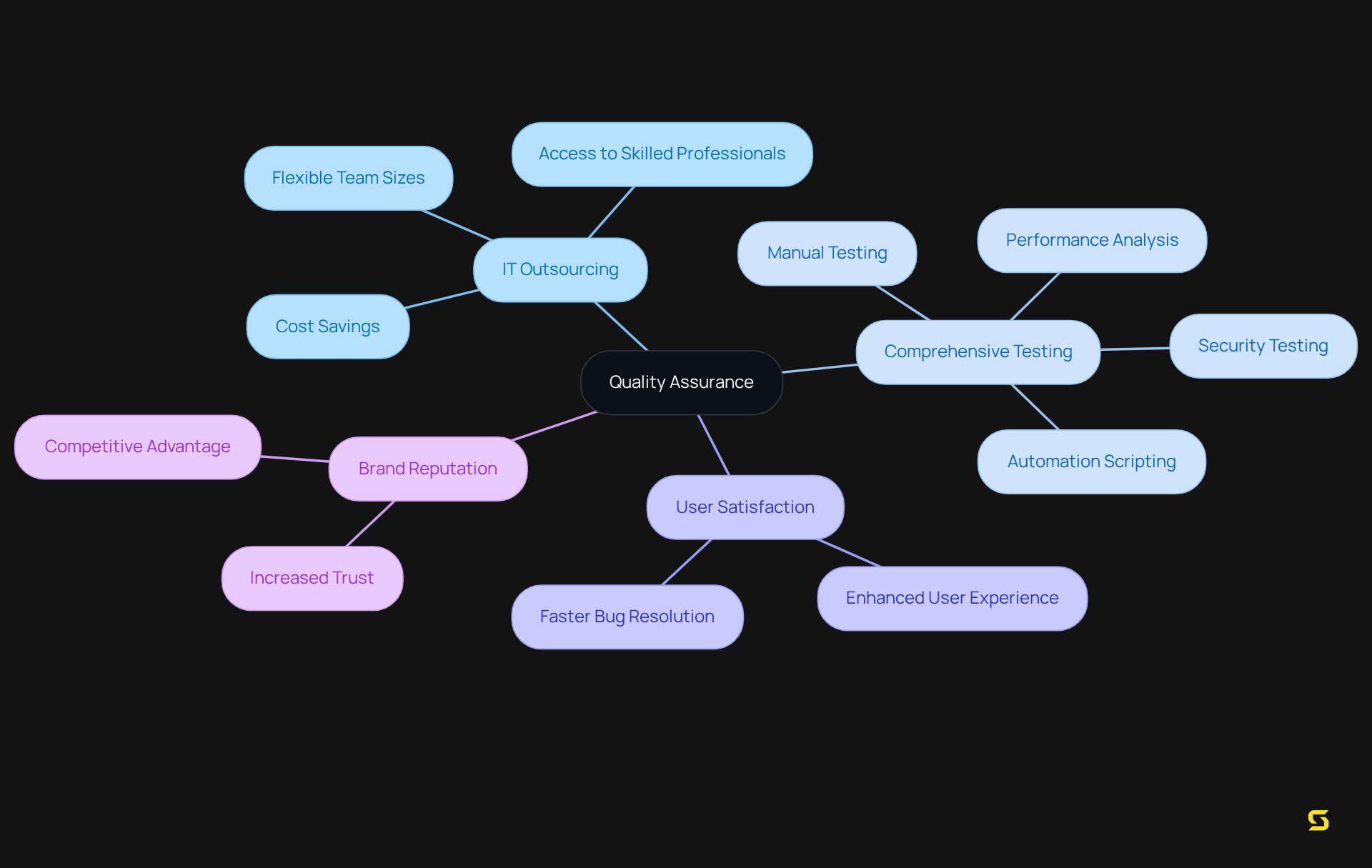
Conclusion
Outsourcing IT services presents a transformative opportunity for SaaS product owners, enabling them to enhance efficiency, reduce costs, and access specialized expertise. By leveraging external resources, organizations can focus on their core business objectives while benefiting from innovative solutions and scalable operations. This strategic approach not only mitigates risks associated with software development but also fosters a culture of continuous improvement and adaptability in a competitive landscape.
The advantages of IT outsourcing are numerous and significant:
- Access to a global talent pool
- Effective cost control
- Improved quality assurance processes
By partnering with experienced professionals, SaaS companies can navigate complex regulatory challenges and implement cutting-edge technologies that elevate their offerings. Furthermore, sharing risks and responsibilities allows for more favorable project outcomes, ensuring that businesses remain agile and responsive to market demands.
Ultimately, embracing IT outsourcing transcends mere operational efficiency; it positions a business for sustainable growth and success. As the landscape of software development continues to evolve, organizations that strategically implement outsourcing will find themselves better equipped to innovate, adapt, and thrive. Evaluating potential outsourcing partners is a crucial step that can lead to significant advancements in both product quality and overall business performance.
Frequently Asked Questions
What is SDA and what services does it provide?
SDA is a leader in delivering tailored software solutions that enhance the development process for SaaS service owners by leveraging customized applications to improve user experiences and drive growth.
How do custom software solutions benefit organizations?
Custom software solutions are crafted to align with specific organizational objectives, leading to more efficient project execution, superior product quality, improved customer relationships, and operational efficiency.
What is the projected growth of the custom software development market?
The global custom software development market is projected to reach USD 146.18 billion by 2030, indicating the increasing recognition of the value of custom software solutions.
How is the software-as-a-service market expected to grow?
The worldwide software-as-a-service market is anticipated to grow from $148.75 billion in 2021 to approximately $702.19 billion by 2030, highlighting the competitive landscape and the importance of tailored software for growth.
What should software solution owners consider before selecting custom software?
Software solution owners must evaluate their specific operational requirements to fully capitalize on the advantages of custom software options.
What are the benefits of outsourcing IT services for SaaS application owners?
Outsourcing IT services allows SaaS application owners to access a vast global talent pool, enhancing their team's skill set, fostering innovative solutions, and ensuring the use of the latest technologies and industry best practices.
What percentage of small enterprises plan to outsource functions?
90% of small enterprises are planning to outsource functions, reflecting the growing recognition of the advantages of leveraging external expertise.
What are the financial motivations behind IT outsourcing?
Cost is the primary factor for 34% of companies contracting services, indicating financial motivations for outsourcing decisions.
How does outsourcing impact operational expenses?
IT outsourcing can lead to an average operational cost reduction of approximately 15% compared to internal operations, providing financial flexibility and allowing organizations to focus on core activities.
What potential savings can companies achieve through strategic outsourcing?
Companies actively seeking to lower operational expenses can improve their profit margins by up to 20% through strategic outsourcing decisions, alleviating fixed costs and enhancing operational efficiency.





